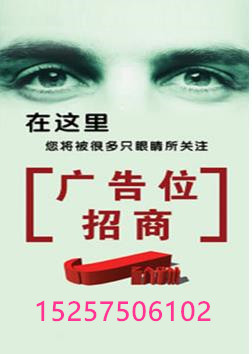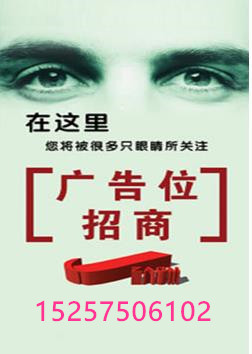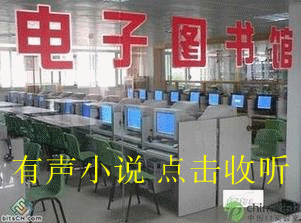一文搞定,英语介绍中医!
2018-03-28 14:41 来源:武汉国际汉语教育中心 作者:未知 阅读:1128次 我要评论
了解中医,介绍中医,解释中医,各位汉语老师长技能喽!报考志愿者、公派教师又多了很多选择哦,因为有不少学校要的特长是“中医”!
Traditional Chinese medicine (also known as TCM, simplified Chinese: 中医; traditional Chinese: 中医; pinyin: zhōngyī) .
Chinese Medicine’s history
Traditional Chinese medicine ( TCM) has a history of More than 4,000 years. Its origin can be traced back to remote antiquity.In a long course of struggling against diseases, TCM evolved into a unique and integrated theoretical systsm.
It is an important part of Chinese culture. More than 2,000 years ago, came out Huangdi's Classic on Medicine( Huang Di Nei jing ), which is the earliest medical classic extant in China. It consists of two parts—Basic Questions ( Su Wen ) and Miraculous Pivot( Ling Shu ), each comprising) nine volumes, each of which, in turn, contains nine chapters, totaling up to 162 chapters.
The book gives a complete and systematic exposition to the following various subjects : the relationship between man and nature, the physiology and pathology of the human body, and the diagnosis, treatment and prevention on diseases. It also uses the theories of yin-yang and the five elements to deal fully with the principles of treatment by differentiation of syndromes (TDS) according to the climatic and seasonal conditions, geographical localities and individual constitution. Hence( giving expression)to the holistic concept of taking the human body as an organic whole and taking the human body with the surrounding environment as the integrity.
It laid a preliminary foundation for the theoretical formation of TCM. After Huangdi's Classic on Medicine another classic of medicine, Classic on Medical Problems ( Nan Jing ), was given birth to the world before the Eastern Han Dynasty. The book deals mainly with the basic theory of TCM, such as physiology, pathology, diagnosis and treatment of diseases and so on. It supplemented what Huangdi's Classic on Medicine lacked. From then on, many medical schoolsand various classics on medicine were brought into being in succession, each having its own strong points.

Introduction of TCM
Traditional Chinese medicine (TCM),is a label that covers a broad range of traditional medicine practices spread throughout Asia,including various forms of herbal medicine,acupuncture,massage therapy,and dietary therapy.
The common thread among these diverse practices is a system for balancing the various functions of the body,based in Daoist principles of yinyang and other metaphysical belief systems,that originated during the Warring States Period in regions that are now part of China.These practices are a common part of medical care throughout East Asia,accounting for roughly 75% of worldwide use,but are considered alternative medicine in the western world.


Diagnostic Method of TCM
LOOK(望) SMELL(闻)ASK(问) PALPATION(切)
The forms of TCM
Traditional Chinese medical science cures people with traditional Chinese herb medicine(中药 zhōng yào), acupuncture and moxibustion(针灸zhēn jiǔ), Chinese Medical Massage(推拿tuī ná), cupping(拔罐 bá guàn), qigong(气功qì gōng), food therapy(食疗shí liáo), and skin scraping(刮痧guā shā).The idea is to help the patient recover by achieving the natural balance of his yin(阴yīn) and yang(阳yáng).

1.Chinese herb medicine(中药 zhōng yào)
aHerbs are a vital part of Chinese healing.
Each ingredient has unique characteristics.
The ingredients work in harmony to help a person’s body.
Herbs can help boost Qi and balance Yin/Yang.
2.Acupuncture/Pressure
Acupuncture involves the stimulation of anatomical points on the body with thin needled.
Contrary to what you might think, acupuncture patients usually feel little to no pain.
Acupuncture needles are hair-thin and are manipulated either by hand or electricity.
Needles are placed at “Yin/Yang Meridian points”
3.Moxibustion(艾灸)
Moxibustion is a traditiaonal therapy utillzing moxa(艾蒿)or mugwort.Mugwort is aged and grouped up to a fluff.Then the fluff is further processed into a stick that resembles a cigar and it is use to warm areas of the body and acupuncture points.
4.Cupping Therapy:


Cupping therapy is an important part of non-drug therapy in TCM, with a history of thousands of years. Under the action of negative pressure, this therapy “dredges meridians,’ promotes blood circulation, remove blood stasis, detoxifies and oxygenates by mechanical effects of dragging and pressing. It is thought to have the ability to offer significant effects on systemic disease, respiratory system disease, circulation system disease, digestive system disease, and others.
5.TuiNa:

TuiNa is a treatment method, by which the physician apply his hands to the body surface, in proximity to the patients’ injuries using multiple techniques (pushing, holding, pressing, friction, rubbing, kneading, dotting and patting, in order to ‘dredge meridians’ and relieve pain.
6.Scraping Therapy:

Scraping therapy is guided by the theory of meridians and acu-points, and in-so-doing scrapes and rubs the body surface again and again using special instruments and methods. This therapy can adjust the contraction and tension of muscle, which may adjust the pressure between tissues and improve blood flow. This method has both practical and theoretical foundations for healing.
7.Qigong
It regulates the mind and breathing to promote the flow of Qi.Qigong is often used to treat diseases.External Qigong is performed on a person by a Qigong master Internal Qigong is practiced by oneself.
武汉国际汉语教育中心 公众号 thrg_edu
服务热线:027-65384486
办公地址:华师培训大楼A312
武汉对外汉语培训就业QQ交流群:514748186

发表评论:
Copyright © 绍兴微平台 All rights reserved 浙ICP备13027338号-1
版权所有:绍兴头条网 热线:0575-88051334 15257506102 绍兴头条网:QQ2805735231@qq.com,1303647702@qq.com 联系地址:绍兴市东昇苑南区四幢504室免责声明:本站系自媒体平台,只提供交流信息,所有文章、贴子仅代表网友个人观点,不代表本站立场。如有侵害到您的合法权益,请您积极向我们投诉。我们将作删稿处理!
Powered by ZmSys.com 本站禁止色情、政治、反动等国家法律不允许的内容,注意自我保护,谨防上当受骗

























